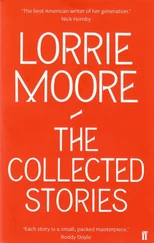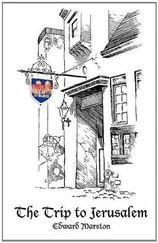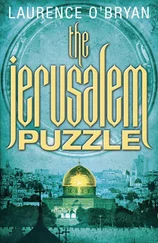The lights change and he corners onto Billing Road, the off-white bulk of the beleaguered General Hospital across the busy thoroughfare and on Studs’ right. From what he knows of local history, which is a lot considering that he was brought up on the unforgiving streets of Flatbush or the like, the hospital had been originally established as the first outside of London on its earlier site along George Row by an unlikely pairing of the preacher Philip Doddridge and the reformed rake Dr. John Stonhouse. Studs has learned a thing or two about the motion picture industry over the years and thinks the story has the makings of a great chalk-and-cheese buddy movie. He’s considering a scene where only a work-squad of raddled eighteenth-century hookers volunteering out of loyalty to Stonhouse sees the new infirmary completed under budget and on schedule, when he passes the high hedges of Billing Road Cemetery looming on his left. Not quite the graveyard that he’s looking for but still an excellent example of the species, and about the only local landmark which the Luftwaffe seemed capable of hitting back in World War Two, perhaps in an attempt to lower the morale of British corpses. He imagines it, the midnight flash amongst the sleeping headstones, the attendant spray of dirt and bone and flowers, the marble shrapnel with somebody’s name on.
An unfolded sunlit panorama out through the front windscreen is compressed to the unreeling comic strip of brick and garden without sky in his side-windows, residential detail ravelling away behind him in the Studebaker’s wake. Across the road on its far side Saint Andrew’s Hospital smears by, blind walls and iron railings with that barrier of tall and restless evergreens beyond them as a natural firebreak for the uncontrollable blaze of delusion kept contained within. When you consider all the more-than-usually gifted if not incandescent individuals that have been confined there, Studs supposes you could view the institution as a necessary annexe or extension-wing of rationality, put up to house an information for which reason has no measure. Or some bullshit like that, anyway.
He slows as the winding asylum frieze concludes; runs into the façade of the Northampton School for Boys, its low wall bounding a trapezoid forecourt over which presides the lofty and improving early twentieth-century building, with its more contemporary additions fanning out towards the east across the former tennis courts. A visibly amused quartet of lads in the requisite navy blazers jeer and jostle by the school gate, possibly returning from their dinner hour and no doubt dutifully categorising their subjective universe into gay and non-gay components. While the erstwhile grammar school has failed to produce quite as many notables as the adjacent mental home, you have to give it marks for trying. Francis Crick was once a pupil as apparently was Hervey, with Ben Perrit as a possible. Studs thinks he heard that Tony Chater, a no-nonsense card-carrying commie and for twenty years editor of The Morning Star , was also on the register, as was young Tony Cotton of chart-scaling 1980s rockabilly purists from St. James’s End, the Jets. Poor old Sir Malcolm Arnold, on the other hand, retained the singular distinction of having attended both the boys’ school and the famous funny farm next door. On his last day of term the juvenile composer would have saved himself a lot of time and effort if he’d just scuffed his way up the cycle path and through the front gate, taking off his jacket, cap and tie resignedly before a sharp U-turn delivered him into the tranquilising green continuum of St. Andrew’s. From the corner of Studs’ right and slightly lower eye he watches the august establishment evaporate into his slipstream, a receding fog of pink and grey shrinking to fit the rear-view mirror as he guns the Packard on to its sepulchral destination.
Further down towards the lower reaches of the Billing Road, with relatively well-off family homes to port and little else save open fields to starboard, Studs gets the uneasy feeling that he’s overlooking an important detail, maybe in his observations on the recently passed School for Boys, although he can’t think what. Was it something to do with how the school was built, its architecture, or …? No. No, it’s gone. Some way before he reaches Billing Aquadrome he takes instead the left turn that will convey his Plymouth De Soto up amongst the honeyed stone of the original village accommodation and the gravel drives of later dwellings, into the unnaturally hushed and watchful lanes of drowsy Weston Favell.
After several minutes he locates a place where it appears that somebody might park their vehicle without being consequently burned to death inside a wicker man. Studs knows these gentrified communities, the money that they represent, and can’t shake off the feeling that he’s probably been monitored on long lens by a spotter from the Women’s Institute since he pulled in. Clambering from his bullet-perforated Nash Ambassador he sizes up the intestinal tangle of sun-buttered streets, byways for the convenience of a different century, and grudgingly acknowledges that places like this, these days, are where all the serious murder-money’s to be made. The smart detectives, rather than pursuing cold-eyed gangland slayers down a hypodermic-littered inner-urban alleyway, are relocating to the sticks, to sleepy English hamlets where ladies in twinsets and retired brigadiers reliably attempt to poison one another on a weekly basis. All this white-on-white crime. It’s a crying shame.
He’s parked in sight of the twelfth-century parish church, its spire rising above the neighbouring chimneys and its stonework with an unevenly toasted look, although in somewhere Weston Favell’s size it would be near enough impossible to find a place from which you couldn’t see it, if he’s honest. Holdall slung across a shoulder that is hunched against the world’s anticipated brickbats, Studs is shortly pushing open a wrought-iron gate with a worse rasp than his own; mounting hewn steps onto the raised-up consecrated ground around the pretty chapel. There’s a faint breeze, but apart from that, he notes with some surprise, it’s an unusually idyllic afternoon. It ain’t his customary milieu, that’s for certain. Sunlight falls like syrup on the neatly tended grass and there can’t be a faulty neon sign for miles, much less a craps game.
Disappointingly, the church itself is closed and, more disheartening still, James Hervey’s final resting place is not among the smattering of headstones to be found in the building’s vicinity. Most of these unassuming markers, with their names and information almost lost to a few centuries of moss or weather, seem to be exclusively for Jacobean stiffs who hung up their plumed hats during the sixteen-hundreds and long before Hervey saw the light of day in 1714. Studs finds a bluish lozenge not much bigger than a boot-scrape, colonised by varicoloured lichens and apparently commemorating no one in particular, being instead a generalised memento mori. With a little scrutiny he works out that the disappearing characters once spelled out O REMEMBER/ PASSERS BY/ AS THOU ART/ SO WAS I ANNO/ 1656. Sure, buddy. Thanks for that. Give my regards to the black plague. These may or may not be the tombs that Hervey meditated when he was amongst, but it’s a safe bet they’re the ones that he saw every day when he was preacher here, perhaps contributing to his notoriously sunny disposition.
Having reached a dead end, Studs elects to play his visit like he meant it. Checking first to find out if the turf is damp he lowers himself gingerly onto the verge, lounging insouciantly at full length on his side with ankles crossed, propped on one elbow like a sensitive Edwardian bachelor while he hurriedly unzips his holdall and retrieves the Hervey printout from its depths. He may as well bone up on his elusive quarry while he’s here, even if the distinguished cleric’s actual bones aren’t anywhere around. Considering the scarcity of the surrounding monuments and slabs, he wonders if this churchyard might be one of those where graves, in short supply back in the day, were by no means a final resting place. There’d be a brief immersion in the soil, maybe a week or two before the flesh and stink were gone, and then the stripped-clean sticks would be dug up and scattered to make room for the next occupant, a bit like hospital beds on the NHS. He can recall a scene from Henry Fielding’s Tom Jones where an altercation at a wedding sees the combatants throw decomposing skulls at one another, since these would indeed have been the handiest form of ammunition readily available in churchyards of the period. If Hervey suffered a short-stay interment of that nature there’d be nothing left of him today, the cranium that once contained all his conjectures on the afterlife long since used to concuss a bridesmaid. Lacking any physical remains or similar DNA evidence to process through a piece of high-tech CSI crime-solving apparatus, Studs resigns himself to reconstructing Hervey from the dozen or so printed sheets already in his grasp and cockling with the perspiration. Carefully removing almost rimless reading glasses from his jacket’s inside pocket, balancing them on the tomahawk blade of his nose, he sinks into the grey miasma of the text.
Читать дальше












